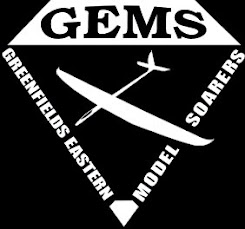| Yet another photo finish! These last minute slope projects are turning into a bad habit. But then I do work better under pressure... Last night was occupied with most the remaining odd tasks to finish up this model and the repairs to the GWS Corsair and Blue Angels F18. I had to finish half a 2 litre Coke in a hurry to obtain the material for the canopy but once again I’m chuffed with the end result. Pity I didn’t have a little bust figure to occupy it. |
| Initially I had a black and yellow scheme in mind but previous experience with the black vinyl lifting as soon as it caught a whiff of sunlight made me settle on my signature blue and yellow. I’ll add some black trim tape for flair. Covering the fuselage is as far as I got before I ran out of time and imagination… Time won’t allow another build update here before this baby hits the slope but I’ll make sure to take plenty before and after pics and report back next week |
May the fickle wind gods smile upon us this weekend!



















.jpg)